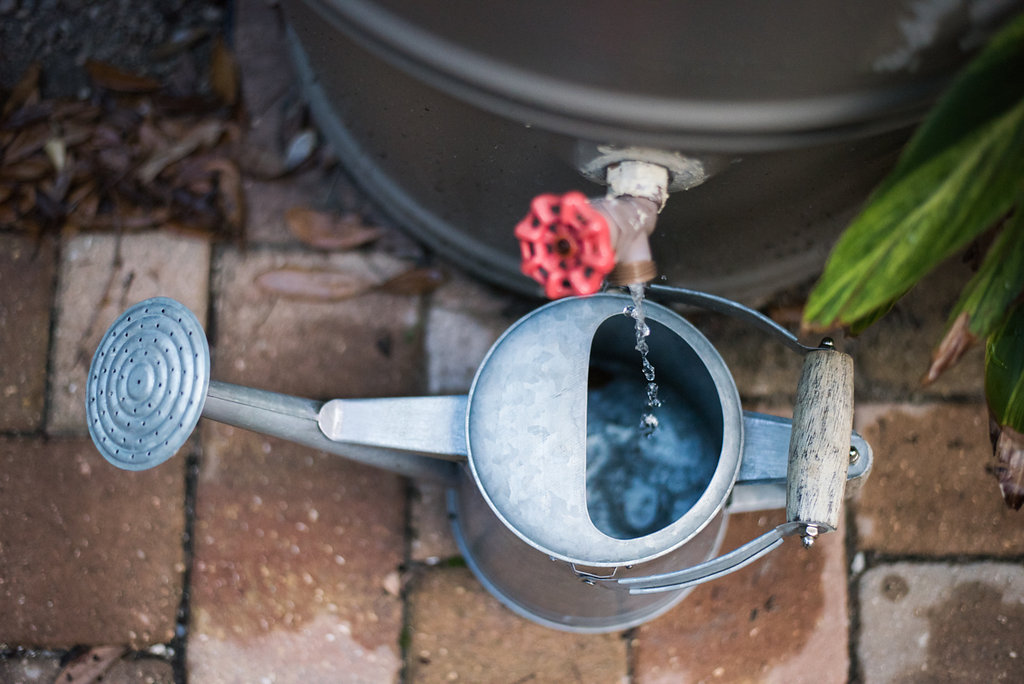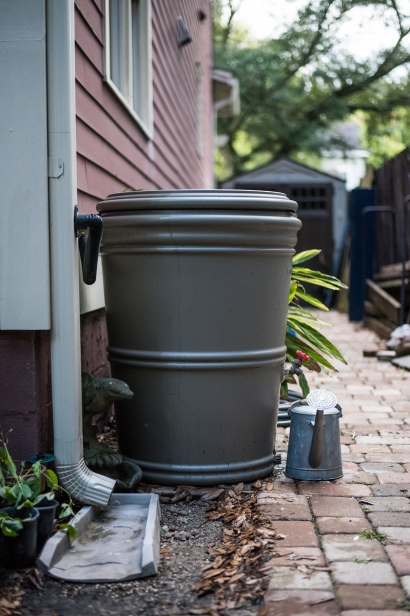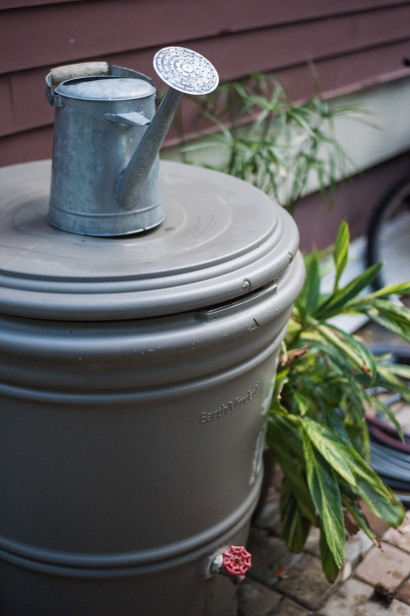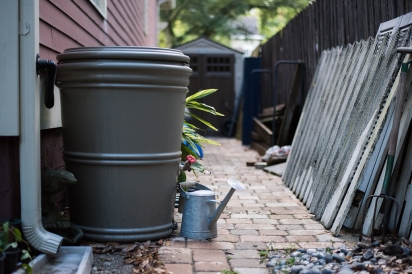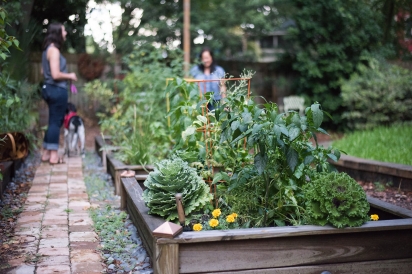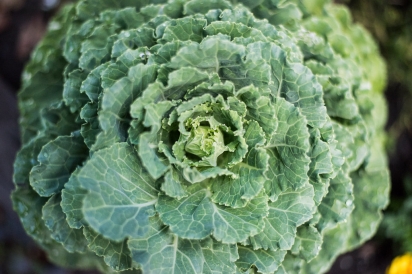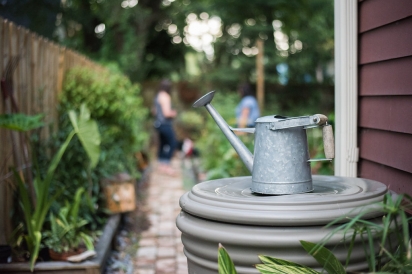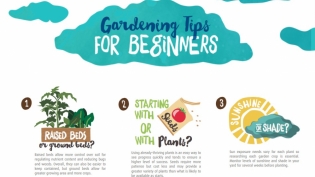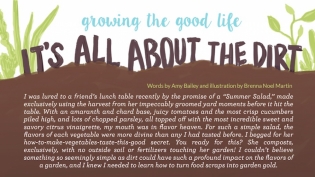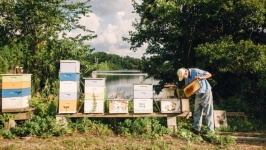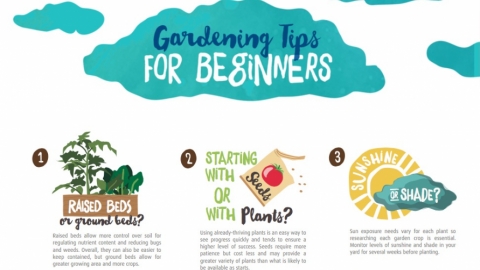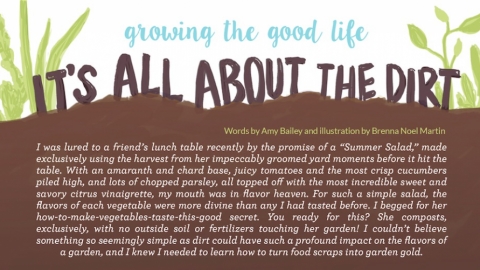Watering with Rain Barrels
When looking for ways to conserve water while irrigating your garden, a rain barrel is an effective and user friendly option. Why use rain barrels? These above ground outdoor storage tanks can collect and save rainwater to reuse in the garden, thus reducing the amount of groundwater you use to irrigate your plants. From a gardener’s perspective rain water is the best kind of water to use for growing food as it doesn’t have the metals and minerals that come from well water, nor does it have the chlorine found in city water.
A typical rain barrel holds about 55 gallons, and according to the EPA, each barrel has the capability of saving the average homeowner more than 1300 gallons of water annually, depending on usage, catchment area, and regional rainfall. Rain barrels can be purchased from local hardware stores and nurseries or if you are up for a DIY project, easily made at home. There are great online tutorials to reference when building your own. The St. Johns Riverkeeper has a helpful tutorial here. Barrels can be customized as much as a kid’s Lego car, but before you get started here are some important aspects to consider.
1. Barrels will collect the most reclaimed water when strategically placed where a roof will have the most run off or connected to preexisting gutters. With each inch of rain a barrel can collect 600 gallons of water per 1,000 square-foot of roof. Although there are rain saucer attachments for free-standing rain barrels, they have the capability of collecting only a fraction of the water.
2. The spigot for the barrels is intentionally placed lower on the barrel, which can make it hard to maneuver around. A stand either bought or crafted can be a great addition to the watering operation. By raising the barrel not only is the spigot more accessible, but each foot of elevation raises the water pressure.
3. Once the barrel is set up there are several options when it comes to distributing the water. A watering can or bucket works fine, but you could also attach a hose or set up drip irrigation. The key to properly using the barrel is to use it frequently. Don’t let the water sit and get stale, and remember to redirect it to the lawn, trees, flowers and most importantly edible plants in the garden.
When home gardener Tina Rodriguez moved, she became the owner of two rain barrels and three raised gardening beds at her new house. Watering with the barrels has become such an integral part of her routine that she is making plans to upgrade her barrels. Rodriguez tries to rely solely on the rain barrels for her vegetable gardens and thanks to the recent rain she has a nearly full barrel.
Adding a rain barrel to your home gardening setup may seem like a small step to conserve water while growing your own food. When you take a closer look at Rodriguez’s garden you see it has reaped the benefits of rain water. Her kale, celery, sweet banana peppers, tomatoes, rosemary, orange tree and lemon tree are all thriving, thanks to a little help from nature.


